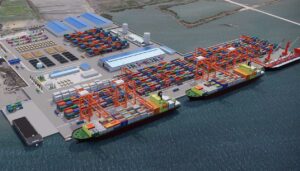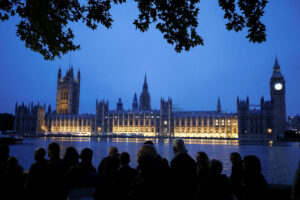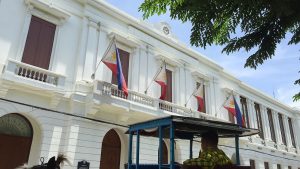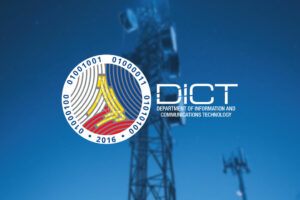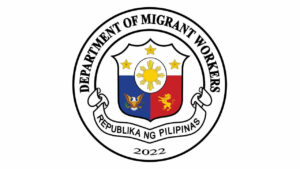Traffic enforcement technology
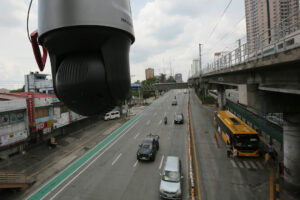
No-contact or non-contact apprehension is nothing new. In other countries, cameras have been used for contactless traffic enforcement since the 1960s. What is relatively new to the Philippines, however, is that more erring motorists are now being caught — and fined — for violating traffic regulations in Metro Manila even while traffic enforcement personnel are not around to personally accost them.
The Dutch company Gatsometer BV was said to have introduced the first red-light camera (film-based) in 1965; the first radar for use with road traffic in 1971; and, the first mobile speed traffic camera in 1982. Incidentally, the Dutch company was founded by rally driver Maurice “Maus” Gatsonides in 1958. His first “Gatsometer” was meant to monitor his average speed on a race track, to help him improve his lap times.
With today’s networking technology as well as new camera devices that take digital pictures and process and transmit them electronically almost instantaneously, regulators can determine and penalize violations based simply on “captured” images or videos. But procedures are also in place for review as well as for adjudication in case of questionable apprehensions.
Despite their shortcomings, I remain supportive of the non-contact apprehension programs (NCAP) being implemented in Metro Manila today. I base this on my experience, as early as 2004, with traffic cameras while driving around Germany; and, several years back, with the NCAP in Parañaque City. In fact, NCAP has been in place in Parañaque since 2018, but no one has legally questioned it until now, and only after Manila and Quezon City implemented their own programs.
I support the use of technology for traffic enforcement, and to complement traffic enforcement personnel. Technology is dispassionate, and does not exercise any discretion in determining a violation. While it cannot be held accountable, it cannot be corrupted as well. As opposed to traffic enforcers, who, at a moment of weakness, can exercise poor judgment.
But while local law may suffice for now to put NCAP in place, perhaps a national law may be required in the future to set national standards for traffic enforcement and to align NCAP systems with existing laws on traffic regulation and enforcement. Moreover, there should be a scientific, data-based standard for setting fines for NCAP.
In my opinion, the setting of traffic fines has always been arbitrary. While they may find basis in law, they are rarely set based on scientific data and study, and the use of algorithms. The simple test to prove this is that traffic fines are usually static, not dynamic. They rarely change over time, despite changes in traffic systems and motorist behavior. Traffic fines are not even indexed to inflation.
The argument is that if monetary penalties intend to correct misbehavior and prevent wrongdoing in traffic enforcement, then shouldn’t they also change along with changes in behavior over time? If a particular violation persists and continues to grow in number as time passes, then shouldn’t its penalty be raised as well? Fines are currently set by statutes without regard for that statute’s effectiveness over time.
Moreover, it will be difficult to impose different regulations and fines for each and every jurisdiction when most motorists traverse different territories in the course of their travel within Metro Manila. In this line, there should be consistency, streamlining, and alignment of regulations, list of violations, and values of fines or penalties among different territories in the metropolis. And fines should be reviewed periodically, based on a study and assessment of the effectiveness of regulation or policy.
The objective is enforcement, not entrapment. It should be a city’s intention to improve traffic enforcement, to improve the movement of people and goods, and to ensure the safety of everyone on the road. NCAP should not be a money-making tool. The collection of fines is simply a consequence of effective enforcement. If fines do not result in effective enforcement and improvement of traffic flow, then there is obviously something wrong in the NCAP process.
So far, one can be left with the misimpression that entrapment is the real objective. A fine should be commensurate to the misbehavior. A standard fine, across the board for most violations, and a hefty one at that, is obviously a fund-raising tool more than anything. Especially if it doesn’t address misbehavior effectively. Traffic violations vary in seriousness and gravity, and their fines should be set accordingly.
Moreover, an NCAP system that is not supported or complemented with improvements in road conditions and markings, and traffic signage and signals, becomes a trap that simply takes advantage and profits from motorists’ ignorance particularly of local traffic laws. Traffic enforcement aims to ensure public safety, first and foremost. But how is safety served and ensured by bad roads, dilapidated signage, and busted signals?
The process should start with improving road conditions. The second step is the rationalization of road use, especially with new regulations regarding public utility vehicles, motorcycles, bicycles, and other personal transport or personal mobility devices all sharing the road. Motoring conditions should then be improved by clear markings and signage and working signals. Then, complement this with effective driver education programs.
Once these are all in place, then the “ignorance” of motorists and everybody else on the road can be exploited by NCAP systems, to the financial gain of cities implementing them. NCAP can probably prioritize yellow box, red light, no-parking/no-waiting/obstruction, and jaywalking violations, followed by speeding and disregarding lane markings. Prioritize monitoring of violations on disregarding public safety and obstructing or impeding flow of traffic.
Again, the objective is enforcement, not entrapment. And enforcement aims to ensure public safety and the faster flow of vehicles, goods, and people. The collection of fines is incidental. Behavior is determined by system or structure. But system or structure should be designed to meet objectives that improve the human condition, and to actually improve behavior rather than just penalize misbehavior. If the NCAP fails in this regard, then what good does it promote?
Marvin Tort is a former managing editor of BusinessWorld, and a former chairman of the Philippine Press Council
